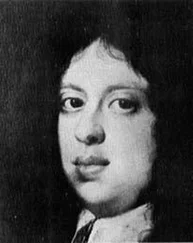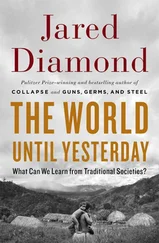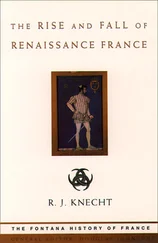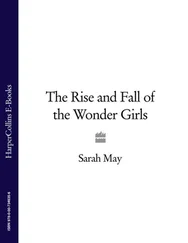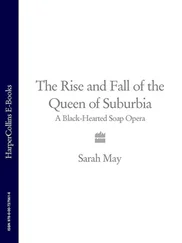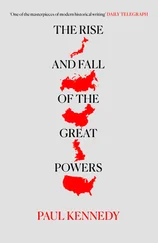Jared Diamond - The rise and fall of the third chimpanzee
Здесь есть возможность читать онлайн «Jared Diamond - The rise and fall of the third chimpanzee» весь текст электронной книги совершенно бесплатно (целиком полную версию без сокращений). В некоторых случаях можно слушать аудио, скачать через торрент в формате fb2 и присутствует краткое содержание. Год выпуска: 1991, ISBN: 1991, Издательство: RADIUS, Жанр: Биология, на английском языке. Описание произведения, (предисловие) а так же отзывы посетителей доступны на портале библиотеки ЛибКат.
- Название:The rise and fall of the third chimpanzee
- Автор:
- Издательство:RADIUS
- Жанр:
- Год:1991
- ISBN:0-09-174268-4
- Рейтинг книги:4 / 5. Голосов: 1
-
Избранное:Добавить в избранное
- Отзывы:
-
Ваша оценка:
- 80
- 1
- 2
- 3
- 4
- 5
The rise and fall of the third chimpanzee: краткое содержание, описание и аннотация
Предлагаем к чтению аннотацию, описание, краткое содержание или предисловие (зависит от того, что написал сам автор книги «The rise and fall of the third chimpanzee»). Если вы не нашли необходимую информацию о книге — напишите в комментариях, мы постараемся отыскать её.
The rise and fall of the third chimpanzee — читать онлайн бесплатно полную книгу (весь текст) целиком
Ниже представлен текст книги, разбитый по страницам. Система сохранения места последней прочитанной страницы, позволяет с удобством читать онлайн бесплатно книгу «The rise and fall of the third chimpanzee», без необходимости каждый раз заново искать на чём Вы остановились. Поставьте закладку, и сможете в любой момент перейти на страницу, на которой закончили чтение.
Интервал:
Закладка:
Now recall also from Chapter Three the extreme dependence of human infants on their parents, especially on their mother. Because human infants develop so slowly and cannot even feed themselves after weaning (unlike young apes), the death of a hunter-gatherer mother would have been likely to be fatal to her offspring up to a later age in childhood than for any other primate. Hence a hunter-gatherer mother with several children was gambling the lives of those children at every subsequent childbirth. Since her investment in those prior children increased with their age, and since her own risk of death in childbirth also increased with her age, the odds of her gamble paying off got worse and worse as she got older. When you already have three children alive but still dependent on you, why risk those three for a fourth?
Those worsening odds probably led through natural selection to menopausal shutdown of human female fertility, in order to protect a mother's prior investment in children. Since childbirth carries no risk of death for fathers, men did not evolve menopause. Like aging, menopause illustrates how an evolutionary approach illuminates features of our life-cycle that would otherwise be counterintuitive. It is even possible that menopause evolved only within the past 40,000 years, when Cro-Magnons and other anatomically modern humans began frequently to survive to the age of sixty or more. Neanderthals and earlier humans usually died before the age of forty anyway, so that menopause would have brought their women no benefits if it were to occur at the same age as in modern Femina sapiens.
Thus, the longer lifespan of modern humans than of apes rests not only on cultural adaptations, such as tools to acquire food and deter predators. It also rests on the biological adaptations of menopause and increased investment in self-repair. Whether those biological adaptations developed especially at the time of the Great Leap Forward or earlier, they rank among the life history changes that permitted the rise of the third chimpanzee to humanity. The last conclusion that I wish to draw from an evolutionary approach to aging is that it undermines the approach which has long dominated the physiological study of aging. The gerontological literature is obsessed with a search for The Cause of Aging—preferably a single cause, certainly not more than a few major causes. Within my own lifetime as a biologist, hormonal changes, deterioration in the immune system, and neural degeneration have vied in popularity for the title of The Cause, without compelling support having been adduced to date for any of the candidates. But evolutionary reasoning suggests that this search will remain futile. There should not be just one, or even a few, dominant physiological mechanisms of aging. Instead, natural selection should act to match rates of aging in all physiological systems, with the result that aging involves innumerable simultaneous changes.
The basis of this prediction is as follows. There is no point doing expensive maintenance on one piece of the body if other pieces are deteriorating more rapidly. Conversely, natural selection should not permit a few systems to deteriorate long before all the others, as the cost of extra repairs on just those few systems would then buy a big increase in life expectancy and would be worth it. By analogy, Mercedes-owners should not install cheap ball-bearings when they are lavishing expense on all other parts of the car. Had they been so foolish, they could have doubled the lifetime of their costly car just by spending a few more dollars for better ball-bearings. But it would not pay either to go to the expense of installing diamond ball-bearings, when all the rest of the car would have rusted away before those ball-bearings wore out. Thus, the optimal strategy for Mercedes-owners, and for us, is to repair all parts of our cars or bodies at such rates that everything finally collapses all at once. It seems to me that this depressing prediction is borne out, and that we come closer to this evolutionary ideal than to the physiologists' long-sought Cause of Aging. Signs of aging can be found wherever one looks for them. Already I am conscious in myself of tooth wear, considerable decreases in muscle performance, and significant losses in hearing, vision, smell, and taste. For all these senses, the acuity of women is greater than that of men of equal age, whatever the age group compared. Ahead of me lies the familiar litany: weakening of the heart, hardening of the arteries, increasing brittleness of bones, decreases in kidney filtration rates, lower resistance of the immune system, and loss of memory. The list could be extended almost indefinitely. Evolution seems indeed to have arranged things so that all our systems deteriorate, and that we invest in repair only as much as we are worth.
From a practical standpoint, this conclusion is disappointing. If there had been one dominant cause of aging, curing that cause would have provided us with a fountain of youth. This thought, operating at a time when aging was thought to be largely a hormonal phenomenon, inspired some attempts at miraculous rejuvenation of old people by hormonal injections or implantation of young gonads. Such an attempt was the subject of Sir Arthur Conan Doyle's story, The Adventure of the Creeping Man, in which the aged Professor Presbury becomes infatuated with a young woman, desperately wants to rejuvenate himself, and instead is found creeping around like a monkey after midnight. The great Sherlock Holmes discovers the reason: the Professor has been seeking youth by injecting himself with the serum of langur monkeys.
I could have warned Professor Presbury that his myopic obsession with proximate causation would lead him astray. Had he thought of ultimate evolutionary causation, he would have realized that natural selection would never permit us to deteriorate through a single mechanism with one simple cure. Perhaps it is just as well. Sherlock Holmes worried greatly about what would happen if such an elixir of life were found: There is danger there—a very real danger to humanity. Consider Watson, that the material, the sensual, the worldly would all prolong their worthless lives… It would be the survival of the least fit. What sort of cesspool may not our poor world become? Holmes would be relieved to know that his worries now appear unlikely to materialize.
PART THREE
UNIQUELY HUMAN
Parts one and two discussed the genetically specified foundations of our unique cultural traits. We saw that those foundations include our familiar skeletal hallmarks, such as our large braincase and our adaptations for upright gait. They also include features of our soft tissues, behaviour, and endocrinology concerned with reproduction and social organization. But if those genetically specified features were our sole distinctions, we would not stand out among animals, and we would not now be threatening the survival of ourselves and other species. Other animals, such as ostriches, walk erect on two legs. Others have relatively large brains, though not as large as ours. Others live monogamously in colonies (many seabirds), or are very long-lived (albatrosses and tortoises).
Instead, our uniqueness lies in the cultural traits that rest on those genetic foundations and that in turn give us our power. Our cultural hallmarks include spoken language, art, tool-based technology, and agriculture. But if we stopped there, we would have a one-sided and self-congratulatory view of our uniqueness. The hallmarks I just mentioned are ones that we are proud of. Yet the archaeological record shows the introduction of agriculture to have been a mixed blessing, seriously harming many people while benefitting others. Chemical abuse is a wholly ugly human hallmark. At least it does not threaten our survival, as do two of our other cultural practices: genocide, and mass exterminations of other species. We are uncomfortable about whether to regard these as occasional pathological aberrations, or as features no less basic to humanity than the traits we are proudest of.
Читать дальшеИнтервал:
Закладка:
Похожие книги на «The rise and fall of the third chimpanzee»
Представляем Вашему вниманию похожие книги на «The rise and fall of the third chimpanzee» списком для выбора. Мы отобрали схожую по названию и смыслу литературу в надежде предоставить читателям больше вариантов отыскать новые, интересные, ещё непрочитанные произведения.
Обсуждение, отзывы о книге «The rise and fall of the third chimpanzee» и просто собственные мнения читателей. Оставьте ваши комментарии, напишите, что Вы думаете о произведении, его смысле или главных героях. Укажите что конкретно понравилось, а что нет, и почему Вы так считаете.


